Since 2013, anyone looking for a snapshot of the resurgence in Dublin’s property market didn’t have to look too far beyond the city’s docklands. Having lain dormant in the aftermath of the crash, the brownfield sites acquired for eye-watering sums by developers in the Celtic Tiger era came to life almost overnight as yellow cranes sprang up like daffodils.
Six years on, and with much of the area on either side of the Liffey either built out or at an advanced stage of development along the river's stretch from Dublin Port to Tara Street, investors and developers seeking to attract the next wave of tech giants and financial services providers are busy staking their claims in Dublin 8.
While the Liberties and its immediate environs have, since medieval times, been an area of the city in which traditional trades and industries such as brewing, distilling, tanning and weaving had located and flourished, it has, ironically, taken the arrival of the global technological revolution for today’s property industry professionals to appreciate its potential as a place for modern business to locate.
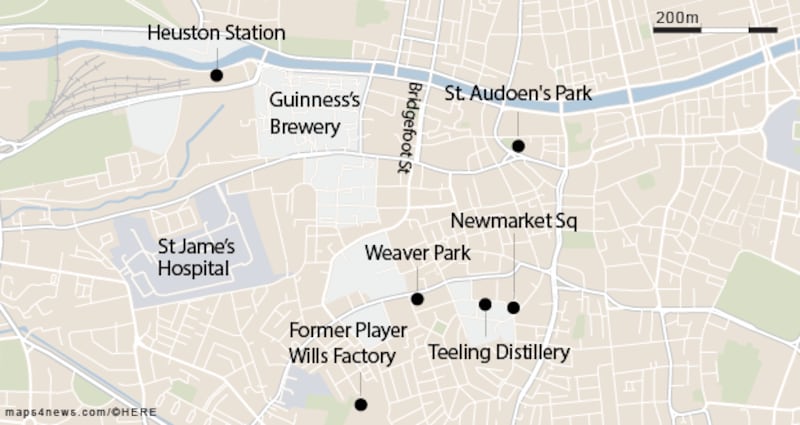
Home to about 23,000 people, according to the last census, the area’s population is on course to grow significantly in the coming years with at least 3,000 new apartments expected to come on stream at high-profile sites such as Guinness’s St James’s Gate brewery and the former Player Wills factory premises on South Circular Road. That could increase by as much as 1,500 additional homes should CIÉ decide to free up the 20 acres its chief executive, Lorcan O’Connor, says are primed for the development of homes, offices and retail space at Heuston Station.
Quite apart from the anticipated growth in the number of long-term residents in Dublin 8, a swathe of new student accommodation schemes and hotels will see the population of the area grow exponentially both during term time and the tourist season.
A spokeswoman for Dublin City Council says that the local authority has been "investing considerably to create a quality environment in the Liberties that supports a shared vision of the area as a great place in which to live, work, visit and invest".
Upgrades to the streetscapes of High Street, Thomas Street and James’s Street have already been completed, while work on Francis Street is expected to begin shortly. The addition of a new public park at Weaver Park on Cork Street and the refurbishment of St Audeon’s Park on High Street have also served to enhance the area . Plans for a new park at Bridgefoot Street are said to be “well-advanced” while planning for a linear park along the Luas line in Herberton are under way.
Outside of its support for the regeneration of Newmarket Square and the St James’s Quarter, the council says it is working to support a range of independent retailers, digital and media start-ups, small enterprises and the tourism and hospitality sectors.
Here are some of the headline sites scheduled for revival in the heart of Dublin 8.
St James's Gate
When Diageo announced in 2017 its intention to transform 12.6 acres at Guinness's St James's Gate brewery into a new urban quarter it fired the imagination and the interest of investors.
With a development partner for the scheme to be selected shortly from among Ballymore, Hines and U+I, the home of the pint of plain will see the delivery of a mixed-use project extending to 1.5 million square feet . Located at the northern end of the 49-acre St James's Gate brewery site, the scheme is to comprise 517,000sq ft of residential space for 500 new homes; 678,000sq of office space; 237,000sq ft of hotel and leisure space including cultural facilities; and 54,000sq ft of retail space.
Although Diageo’s plan will see historic structures retained, including the iconic gate and Arthur Guinness’s residence, the plan envisages the transformation of “centuries-old vat houses, brew houses and cooperages into incredible spaces”.
Heuston South Quarter
The completion of the ambitious Heuston South Quarter is in prospect following its recent €222 million acquisition by Henderson Park Capital from US property giant Marathon Asset Management.
While the scheme already comprises 266 apartments, 9,877sq m (106,319sq ft) of grade-A offices and 4,463sq m (48,034sq ft) of commercial space delivered by developer Padraic Rhatigan prior to the 2008 crash, Henderson will be looking to maximise the potential of its remaining 1.47 hectare (3.63 acre) development site. A feasibility study prepared by Reddy Architects and Urbanism suggests the land could accommodate a development comprising 245 apartments alongside office and retail space.
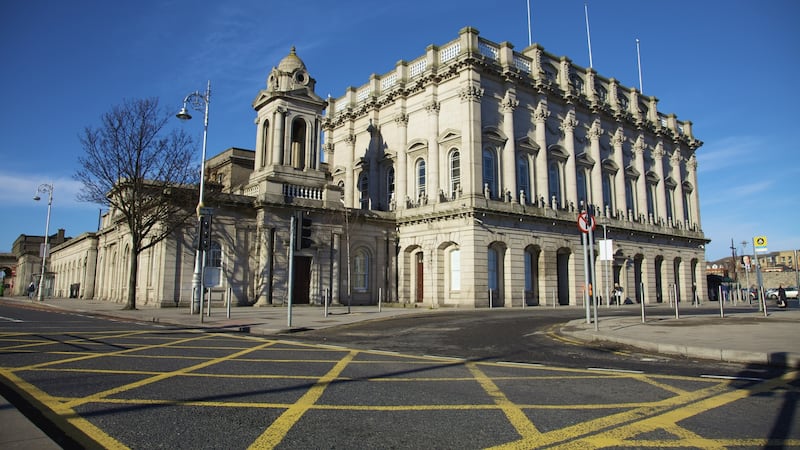
Heuston station
For generations of Dubliners and commuters, Heuston station has been regarded simply as a point of departure or arrival. That could be about to change, however, with CIÉ's chief executive, Lorcan O'Connor, in a recent the Irish Times interview outlining his vision to transform the 173-year-old station into a "really significant" mixed-use development comprising homes, shops and offices and an "iconic building that is significant in the overall context of the city".
O’Connor could well be pushing an open door with Dublin city planners given Heuston station’s location within the strategic development regeneration area known as the Heuston Gateway. Under the Dublin City Development Plan, the area is identified as a western counterpoint to the city’s docklands, offering the potential for buildings of more than 50m (16 storeys) in height. As O’Connor sees it, about 20 acres at Heuston station have potential for the development of hundreds of homes, offices and retail.
Hickeys site
The Hickeys site on Parkgate Street may be located on the north side of the river Liffey, but it falls within the Dublin 8 postal code thanks to a historical anomaly dating back to the construction of a new post office and sorting office on James's Street in 1892. For the sake of convenience, postal service chiefs decided that Áras an Uachtaráin – or the vice-regal lodge as it was then – would have its post delivered from the southside rather than the old sorting office in Phibsboro. The Áras and Phoenix Park and Parkgate Street have remained in Dublin 8 ever since.
But while the Hickeys site’s Dublin 8 postcode may come in handy for the marketing bumph, the real value for its new owner, developer Joe O’Reilly, will be derived from its location within the Heuston Gateway regeneration zone. The 1.65 acre (0.67 hectare) site has the potential to accommodate more than 500 apartments, a hotel, offices or a mix of these uses.
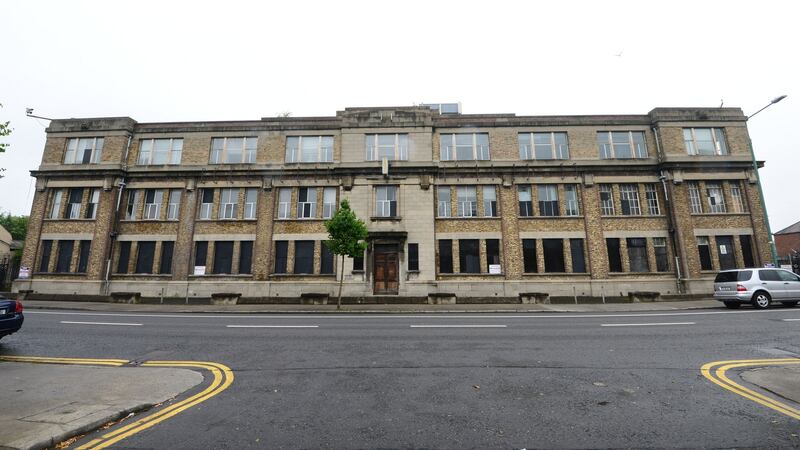
Player Wills site
Located on South Circular Road and within a short walk of Dublin city centre, the former Player Wills cigarette factory and Bailey Gibson industrial site is arguably the most exciting of the developments set to be delivered in the Dublin 8 area.
Assembled originally by developer Ciarán Larkin prior to the crash, the 10.67 acre (4.32 hectare) site did have planning permission for a million-square-foot mixed-use scheme comprising 754 apartments, offices, retail space, a school, two creches, a medical centre, leisure centre and swimming pool on the site. That permission lapsed, however, after the loans associated with the scheme went into National Asset Management Agency.
Having lain dormant for more than a decade, the site is now set to accommodate up to 1,400 new homes over the coming years under its new owners, US-headquartered property group Hines. The residential element of the scheme will comprise a mix of private rented sector (PRS) and traditional owner-occupier units.
Hines says it expects to submit a planning application for the scheme later this year with a view to commencing construction in early 2020. Based on that timeline, the first homes will be available to rent and buy in 2022.
Kevin Street DIT campus
The decision by DIT's successor, Technological University Dublin to centralise its operations at its new Grangegorman campus has freed up a major redevelopment opportunity right at the point where Dublin 8 meets the prime Dublin 2 city centre district.
Located just 300m from the Luas Green line stop at St Stephen’s Green, the 3.57 acre site occupied by the former Kevin Street DIT facility was acquired for €140 million earlier this year by developer Shane Whelan’s Westridge Real Estate. While Whelan and his team are in the process of preparing a planning application for the site, it is expected to accommodate a mixed-use scheme of up to 53,000sq m (570,487sq ft), comprising a combination of grade-A office space and hundreds of apartments aimed at Dublin’s fast-growing PRS market. The scheme is also set to include retail, food and beverage offerings.
55 Fumbally
International co-living specialist the Collective is gearing up to bring its first shared accommodation offering to the Dublin market at the very heart of the Liberties. Having acquired the 0.55 acre site at Fumbally Lane from developer Paddy McKillen jnr's Oakmount for €10.5 million last May, it is expected that the company will seek to redesign the scheme, rather than proceed with the development of the 34 apartments and 26,700sq ft of office space allowed under the site's existing planning permission.
While the site has been cleared, a large cut-stone former distillery building remains in place. This protected structure is likely to be refurbished and incorporated into any future development.
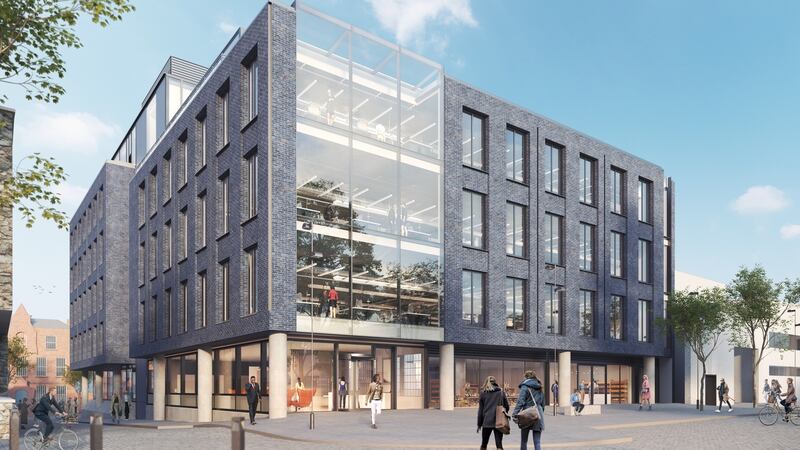
Newmarket Square
Known originally as the centre of Dublin's distilling and brewing industries, Newmarket Square has undergone a renaissance of sorts in recent years with the arrival in the area of the Teeling Whiskey Distillery, the Aloft Hotel and two major student accommodation developments by UK-headquartered GSA. Known as the Mill and the Tannery, the GSA schemes comprise 400- and 300-bed spaces respectively. Newmarket Square's potential as a location for corporate occupiers will be tested next summer with the arrival to the letting market of the Eight Building. Currently under construction, the six-floor building will comprise 75,000sq ft of grade-A office space.
Clanbrassil Street
Quite apart from presenting the savvy househunter with an opportunity to acquire a Georgian period property at a fraction of the eye-watering prices typically commanded in nearby Dublin 6 and 4, the stretch of road from Clanbrassil Street Upper to New Street is displaying all the signs of the revival under way in Dublin 8. French bakery and pizzeria Gaillot et Gray, 3fe chief Colin Harmon's latest coffee shop, Daniel, and the renowned Fumbally cafe and Fumbally Stables community space are just some of the attractions to be found on the street itself, or adjoining it.
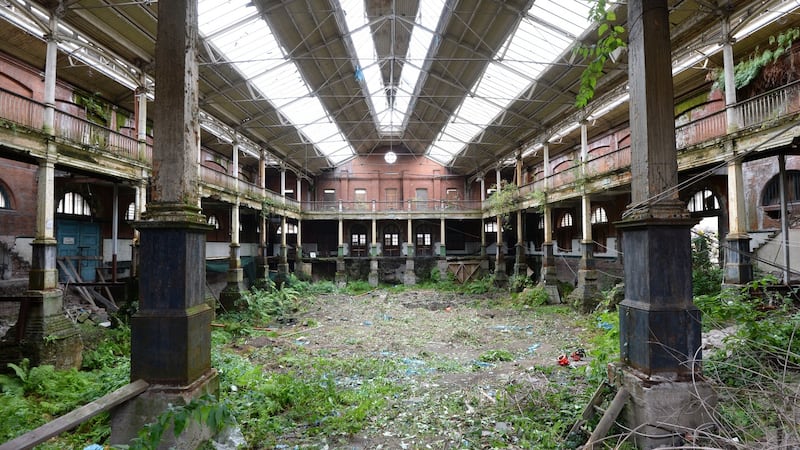
Iveagh Market
Any discussion of this area of the Liberties and Dublin 8 tends to be dominated by the long-stalled but much-anticipated bid by publican Martin Keane to transform the landmark Iveagh Market building on Francis Street.
The owner of the Oliver St John Gogarty pub and Blooms secured the leasehold title of the property from the council for £1.4 million in 1997 on the condition that he redevelop it. The building has lain idle for more than two decades due to a succession of events, which Keane insists were beyond his control. An archaeological dig, problems relating to the property’s title and the 2008 economic crash have all combined to stall the delivery of the project.
While the council signalled its intention in 2017 to take back possession of the historic building, Keane announced a new proposal earlier this year to create an Iveagh Markets Quarter on the site. The plan envisages the conversion of the existing market building into a European-style food hall along with a public realm, flower market, distillery, cookery school, restaurants, music venue and studio space for artisan producers and craftspeople. The market building’s adjoining sites, meanwhile, would see the construction of a four-star hotel, a three-star hotel and a youth hostel.












